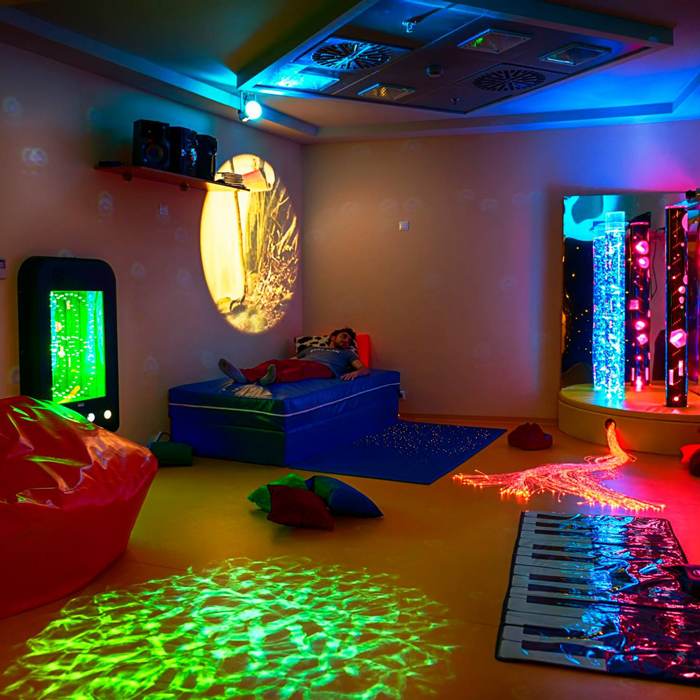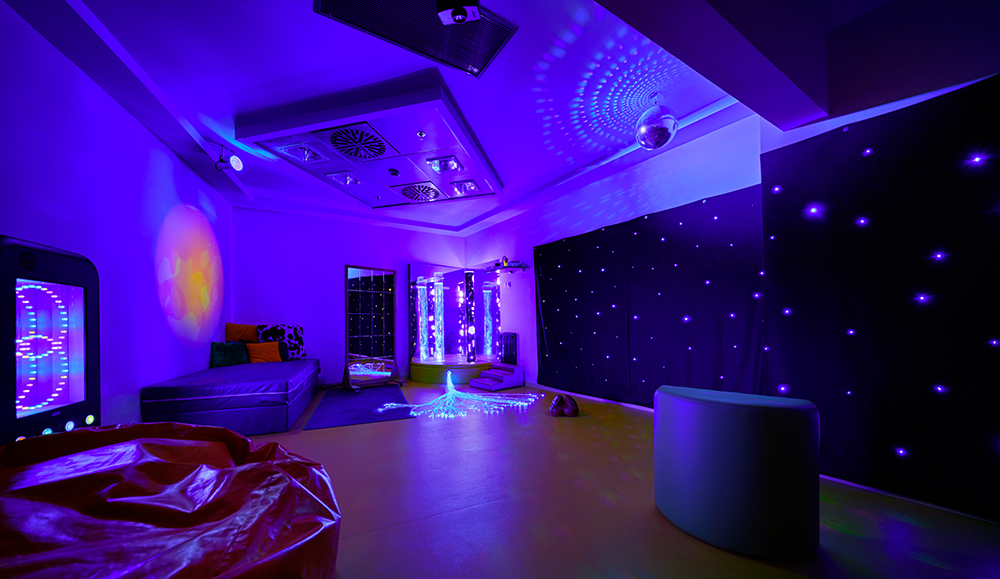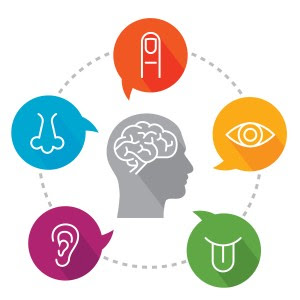Snoezelen Room

The idea of an MSE is to provide stimulation, and yet be calming.
It aims to provide a “failure-free” experience, allowing pleasurable stimulation without the need for verbal abilities or requiring specific outcomes. The focus is to help the user of the room to gain maximum pleasure from the sensory activity they and their carer are involved in.
The approach to using an Multi-Sensory Environment is generally non-directive, without the need for intellectual or verbally mediated activity in terms of following instructions or rules, and regular exposure seems to be more effective. Essentially, one would allow the user of the space the time and opportunity to experience at their own pace what the room has to offer. One may not use or activate immediately all equipment that the room has available, but gradually introduce more of the sensory stimulation, allowing the cues given by the client to guide their caretaker.
The time in the Multi-Sensory Environment should be client-focused, with the wishes of that individual determining the activity.
Their attention, interest and expressions of pleasure or displeasure are the basis for participation in the Multi-Sensory Environment. Obviously the responses to the experience of the room will be highly individual and caregivers need to be sensitive to the client, suspending their expectations and judgments, closely monitoring any responses they notice in their clients.
For example, a client with dementia and poor eyesight may be frightened by a “flying” bird in the Multi-Sensory Environments, while another whose vision is not impaired may be delighted by the same projected image. Some may find soft colors projected onto the walls soothing, but become confused by pictures. Music may be pleasurable for some clients, but too stimulating for others. In another situation, one who is tactile defensive will not want to touch or even have near them any tactile stimuli, and should not be pushed with this, but allowed to explore other aspects of the Multi-Sensory Environment. Over time, and perhaps being close to others and watching them touch and enjoy the tactile stimulation, this client may begin to feel safe enough to give this sensory experience a try.

THE SENSES
The world is full of sensory stimuli. Some individuals are not able to organize and respond appropriately to this stimuli, others have lost skills due to accident or illness, and some others lack the ability or freedom to make choices to balance their sensory lives. For these individuals the world may be a confusing and frightening place, full of over- or under-stimulation. They may behave inappropriately and act or respond in ways others do not understand.

The idea of an MSE is to provide stimulation, and yet be calming.
It aims to provide a “failure-free” experience, allowing pleasurable stimulation without the need for verbal abilities or requiring specific outcomes. The focus is to help the user of the room to gain maximum pleasure from the sensory activity they and their carer are involved in.
The approach to using an Multi-Sensory Environment is generally non-directive, without the need for intellectual or verbally mediated activity in terms of following instructions or rules, and regular exposure seems to be more effective. Essentially, one would allow the user of the space the time and opportunity to experience at their own pace what the room has to offer. One may not use or activate immediately all equipment that the room has available, but gradually introduce more of the sensory stimulation, allowing the cues given by the client to guide their caretaker.
The five senses with which we are most familiar are:
- Vision (Visual) — Provides us with details about what we see and helps us to define boundaries as our brain processes color, contrast, shape, and movement.
- Touch (Tactile) —Keeps us in contact with our surroundings. Touch is vital to our survival and is one of our modes of communication. From head to toe, our skin helps us feel temperature, light touch, deep pressure, vibration, pain, and so much more.
- Smell (Olfactory) —We use the sense of smell all the time. Flowery, pungent, musty, acrid, and putrid—we identify many things by their smells. Strong memories can also be tied to smells.
- Hearing (Auditory) —Provides us with details about the sounds we hear such as volume, pitch, rhythm, tone, and sequence.
- Taste (Gustatory) —Gives us feedback on the different types of tastes: sweet or sour, spicy, salty, bitter, etc.
Two senses with which we may not be as familiar are:
- Vestibular —This sense puts balance into our lives. It provides information about movement, gravity, and changing head positions. It tells whether we’re moving or still, as well as the direction and speed of our movement. We may even tell whether we are vertically or horizontally positioned—even with our eyes closed.
- Proprioception —This sense processes information from our muscles, joints, and other body parts to provide us with an unconscious awareness of the position of our body parts in relation to each other—and their relation to other people and objects.
Contact us to send you more information about the available programs!


